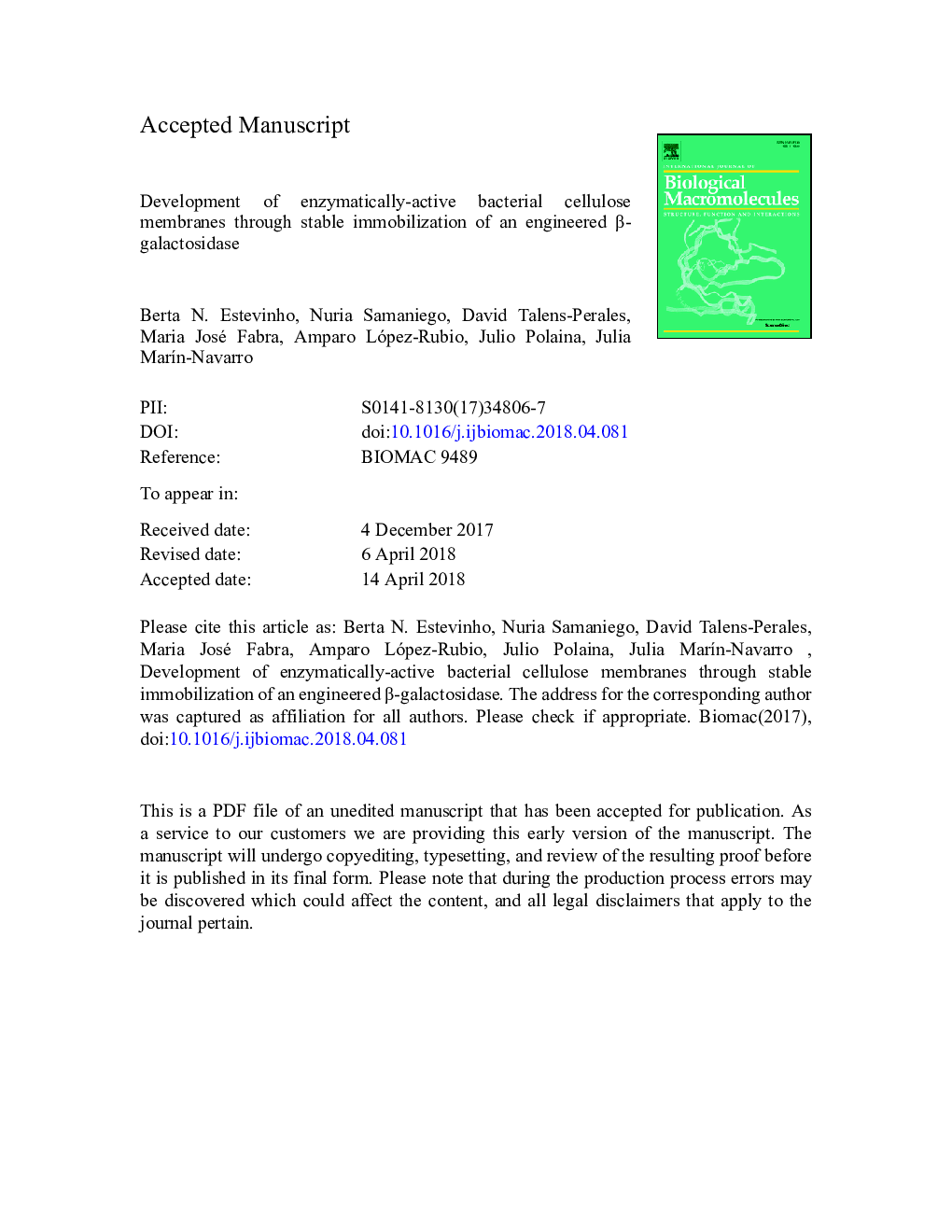| Article ID | Journal | Published Year | Pages | File Type |
|---|---|---|---|---|
| 8327288 | International Journal of Biological Macromolecules | 2018 | 36 Pages |
Abstract
Enzymatically-active bacterial cellulose (BC) was prepared by non-covalent immobilization of a hybrid enzyme composed by a β-galactosidase from Thermotoga maritima (TmLac) and a carbohydrate binding module (CBM2) from Pyrococcus furiosus. TmLac-CBM2 protein was bound to BC, with higher affinity at pHâ¯6.5 than at pHâ¯8.5 and with high specificity compared to the non-engineered enzyme. Both hydrated (HBC) and freeze-dried (DBC) bacterial cellulose showed equivalent enzyme binding efficiencies. Initial reaction rate of HBC-bound enzyme was higher than DBC-bound and both of them were lower than the free enzyme. However, enzyme performance was similar in all three cases for the hydrolysis of 5% lactose to a high extent. Reuse of the immobilized enzyme was limited by the stability of the β-galactosidase module, whereas the CBM2 module provided stable attachment of the hybrid enzyme to the BC support, after long incubation periods (3â¯h) at 75â¯Â°C.
Related Topics
Life Sciences
Biochemistry, Genetics and Molecular Biology
Biochemistry
Authors
Berta N. Estevinho, Nuria Samaniego, David Talens-Perales, Maria José Fabra, Amparo López-Rubio, Julio Polaina, Julia MarÃn-Navarro,
